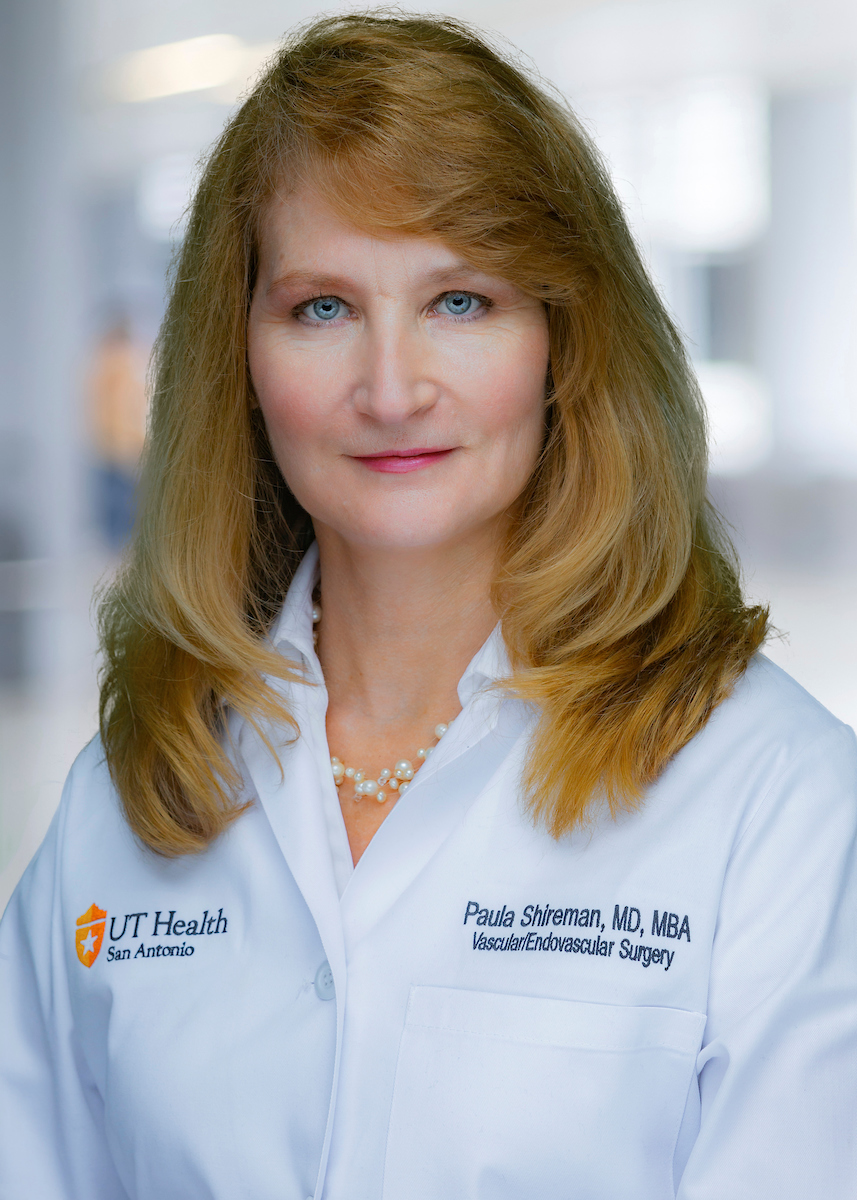Patients should be assessed for frailty before having many types of surgery, even if the surgery is considered low risk, a review of two national patient databases shows.
Frailty is a clinical syndrome marked by slow walking speed, weak grip, poor balance, exhaustion and low physical activity. It is an important risk factor for death after surgery, although the association between frailty and mortality across surgical specialties is not well understood.
The study, conducted by faculty at multiple institutions including The University of Texas Health Science Center at San Antonio (UT Health San Antonio), mined patient data from the Veterans Affairs (VA) Surgical Quality Improvement Program and the American College of Surgeons (ACS) National Surgical Quality Improvement Program.

“In previous research, we introduced the concept of an Operative Stress Score to assess the impact of frailty on mortality after surgery,” said Paula K. Shireman, MD, MS, MBA, professor of surgery at UT Health San Antonio. She is a vascular surgeon in the university’s Joe R. and Teresa Lozano Long School of Medicine and the South Texas Veterans Health Care System.
“In that first study, which examined only VA data, we showed that even patients undergoing low-risk procedures had very high post-operative mortality,” Dr. Shireman said.
The question remained: Because frailty screening takes effort and clinics are busy, are there specialties that shouldn’t do it because they perform mainly low-risk procedures in patients who are at low risk? In these specialties, does the effort of screening outweigh the benefit?
The newest research, published in JAMA Surgery, assigned Operative Stress Scores (OSS) to cases performed in nine noncardiac specialties including vascular surgery, orthopaedic surgery, neurosurgery, gynecologic surgery, urologic surgery, and ear, nose and throat surgery.
“This time, instead of looking at all cases broadly, we characterized different specialties as high risk or low risk,” Dr. Shireman said. “For example, most of the procedures done by urologic surgeons are relatively low risk. Vascular and thoracic surgeons, on the other hand, perform many high-risk procedures.”
Operative Stress Scores categorized procedures as low (1-2), moderate (3) and high (4-5) stress. Specialties were categorized by case mix as predominantly low intensity, moderate intensity or high intensity. “Basically, did they do more OSS-1s or did they do more OSS-5s?” Dr. Shireman said.
The study examined 30-day postoperative mortality in the VA case records and 30-day and 180-day mortality after surgery in the ACS registry. 2.3 million patient records are in the American College of Surgeons database and 426,000 in the VA database. 56% of the patients in the ACS registry were women, while 93% of the patients in the VA registry were men. All patients were 18 or older.
The key finding: “Frailty was a consistent, independent risk factor for 30- and 180-day mortality across all specialties,” the authors wrote.
“Based upon all of this, the results showed that frailty is prevalent enough that it should be screened in all different surgical specialties, regardless of the case mix,” Dr. Shireman said.
Cardiac specialties were not included. The VA has a separate registry for cardiac procedures versus all other surgeries, Dr. Shireman said. The researchers used the all-other-surgeries VA registry.
Association Between Patient Frailty and Postoperative Mortality Across Multiple Noncardiac Surgical Specialties
Elizabeth L. George, MD, MSc; Daniel E. Hall, MD, MDiv, MHSc; Ada Youk, PhD; Rui Chen, MS; Aditi Kashikar, MBBS; Amber W. Trickey, PhD; Patrick R. Varley, MD; Paula K. Shireman, MD, MS, MBA; Myrick C. Shinall Jr., MD, PhD; Nader N. Massarweh, MD, MPH; Jason Johanning, MD, MS; Shipra Arya, MD, MS
First published: Nov. 18, 2020, JAMA Surgery
https://doi.org/10.1001/jamasurg.2020.5152
The Long School of Medicine at The University of Texas Health Science Center at San Antonio is named for Texas philanthropists Joe R. and Teresa Lozano Long. The school is the largest educator of physicians in South Texas, many of whom remain in San Antonio and the region to practice medicine. The school teaches more than 900 students and trains 800 residents each year. As a beacon of multicultural sensitivity, the school annually exceeds the national medical school average of Hispanic students enrolled. The school’s clinical practice is the largest multidisciplinary medical group in South Texas with 850 physicians in more than 100 specialties. The school has a highly productive research enterprise where world leaders in Alzheimer’s disease, diabetes, cancer, aging, heart disease, kidney disease and many other fields are translating molecular discoveries into new therapies. The Long School of Medicine is home to a National Cancer Institute-designated cancer center known for prolific clinical trials and drug development programs, as well as a world-renowned center for aging and related diseases.
The University of Texas Health Science Center at San Antonio, also referred to as UT Health San Antonio, is one of the country’s leading health sciences universities and is designated as a Hispanic-Serving Institution by the U.S. Department of Education. With missions of teaching, research, patient care and community engagement, its schools of medicine, nursing, dentistry, health professions and graduate biomedical sciences have graduated more than 37,000 alumni who are leading change, advancing their fields, and renewing hope for patients and their families throughout South Texas and the world. To learn about the many ways “We make lives better®,” visit www.uthscsa.edu.
Stay connected with The University of Texas Health Science Center at San Antonio on Facebook, Twitter, LinkedIn, Instagram and YouTube.
To see how we are battling COVID-19, read inspiring stories on Impact.


